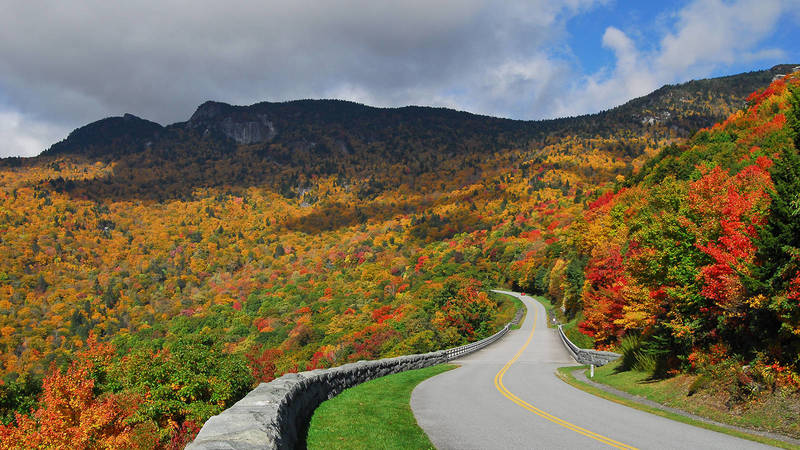Struggling communities in New York and New Jersey need a relief funding bill that will help both people and parks.
Update, 1/16/13: Thanks to steady pressure from NPCA’s supporters, staff, allies, and many others, the House of Representatives passed the Sandy relief bill, including the Frelinghuysen amendment. This funding will provide shelter, power, and other basic necessities to struggling coastal communities, and will also support the recovery of our beloved national parks in the region.
Just before Halloween last October, Hurricane Sandy made landfall in the Northeast, destroying communities and hurting families, homes, and businesses. Not only was the human toll devastating, but Sandy caused unprecedented damage to national parks, sparking one of the costliest rebuilding efforts in U.S. history.
National parks that sustained extensive damage include the Statue of Liberty, where mechanical systems were flooded and destroyed; Sandy Hook in Gateway National Park, which was inundated with floodwaters and debris; and Fire Island National Seashore,which experienced severe erosion along its length. Ellis Island, Governor’s Island, Castle Clinton, Paterson Great Falls, and other sites in the region experienced flooding, significant damage to mechanical systems and employee facilities, and devastating landscape damage.
Last month, the Senate passed a bill that would have provided aid for people and places impacted by Hurricane Sandy; the bill included more than $400 million in desperately needed funds directly focused on rebuilding our national parks, and a similar amount in Army Corps construction funds to rebuild the beach and protective dunes at Fire Island National Seashore. Incredibly, however, the House failed to take up the bill before the 112th Congress adjourned, appropriately causing outrage among both Democratic and Republican lawmakers who represent the affected areas.
Congress and the federal government have traditionally responded rapidly to such disasters, such as the aid bill for Hurricane Katrina that passed overwhelmingly on a bipartisan basis and was signed by the president within a week of the storm. Yet more than two months have passed since the disaster with no relief, and now the new Congress will be forced to start from scratch.
NPCA urges the new 113th Congress to immediately resume action on a storm relief funding bill to help struggling communities and national parks throughout the Mid-Atlantic and Northeast. Provisions in the Senate-passed bill that need to be included in new legislation include:
- Critical disaster relief for the National Park Service’s construction budget to keep America’s national parks open for business.
- Aid for the Park Service’s Historic Preservation Fund,to repair historic structures.
- Money for the Department of the Interior’s operations to assist local, state, and tribal governments in protecting and restoring habitat, water quality, and access to the New York Harbor. This provision would help parks across different jurisdictions replace damaged infrastructure in a more sustainable way that will reduce flooding and storm damage in the future.
- Authorization for an interagency task force to coordinate the rebuilding process in the New York/New Jersey Harbor.
- Funding to restore urban ecosystems that will protect waterfront communities and our national parks from future storms, similar to a process authorized after Hurricane Katrina. The process would support ecosystem restoration plans along the New York/New Jersey waterfront to help protect communities from future disasters. Healthy wetlands and natural buffer zones in coastal areas can absorb storm surges and lessen the damage from storms like Hurricane Sandy.
- Funding to expedite continuing authorities program (CAP) projects being undertaken by the Army Corps. This funding will increase the long-term sustainability of coastal ecosystems, communities, and regional parks and reduce potential dangers associated with large-scale flood and storm events. For example, the New York District Army Corps is rebuilding tidal wetlands in Jamaica Bay, a park unit of Gateway National Recreation Area. In addition to providing important habitat for plant and animal species, Jamaica Bay’s tidal wetlands naturally decrease the velocity of flood waters, absorb them, and physically buffer their impact on nearly 5 million residents in Brooklyn and Queens alone.
- Funding for the Army Corps to immediately start construction of the Fire Island to Montauk Reformulation project, an effort to rebuild the protective dunes of Fire Island National Seashore that protect millions of residents and commercial enterprises on Long Island’s south shore.
About the author
-
 John Garder Senior Director of Budget & Appropriations, Government Affairs
John Garder Senior Director of Budget & Appropriations, Government AffairsJohn Garder is Senior Director of Budget & Appropriations at NPCA. He is a budget analyst and researcher who advocates for more adequate funding for national parks to diverse audiences, including Congress, the White House, and the Department of the Interior.
-
General
-
- NPCA Region:
- Northeast
-
Issues


